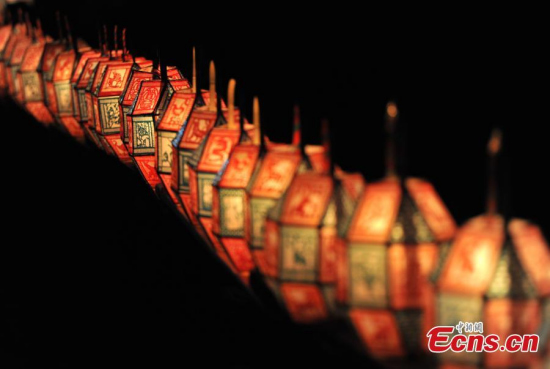
Lanterns hang for the Lantern Festival in Pengfang Village, Changting County, East China's Fujian Province. (Photo: China News Service/Zhang Bin)
The last day of the Chinese New Year celebration – the Lantern Festival marked on the 15th day of the first lunar month – has earned worldwide fame in recent years.
However, aside from the lanterns illuminating Chinese streets and online debates over the fillings of tangyuan (glutinous rice dumplings), it is rarely known, even to many Chinese people, that the Lantern Festival is the real Chinese equivalent to Valentine's Day.
Compared to the Qixi Festival on the seventh day of the seventh lunar month, which is more widely recognized by young couples and commercial brands, the Lantern Festival has a relatively low profile. But it is undeniable that in Chinese history, it is indeed a day for love.
An ancient carnival for all
The history of the festival could be traced back to the Han Dynasty (202 B.C.-220 A.D.), and the celebrations were gradually enriched, expanded and settled in succeeding dynasties. But from the very beginning, lanterns have been an indispensable part of the day.
Long before the electric lights were invented, the streets in ancient Chinese cities were illuminated by various colorful lanterns.
Despite the fact that most Chinese dynasties had curfews during the night, all the people were allowed to stay out on the days around the Lantern Festival. The Chinese women, who had to stay indoors for most of their lives, were permitted to admire the lanterns and the full moon on the day as well.
Therefore, it was almost the only time for young men and women to meet with each other and fall in love, according to experts.
Dressed in their most beautiful clothes and putting on their most shining hairpins, the ancient Chinese, noblemen and ordinary people included, would swarm the streets, where dancers and musicians, acrobats and vendors would gather as fireworks were lit and lanterns displayed.
There were also riddles written on the lanterns, with many people competing to solve them. Most of the riddles were written in the form of poems, so were therefore mostly enjoyed by educated residents. Many have been handed over generations.


















































